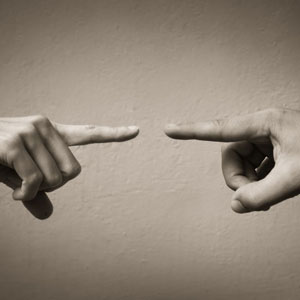
Like all fifty states, California has a law or statute that applies to wrongful death (§ 377.60 of the Code of Civil Procedure). In California, surviving loved ones may recover damages when a family member dies because of another person’s wrongful negligent, reckless, or intentional act. Wrongful acts that may underlie a claim for wrongful death include, but are not limited to, the following acts: Motor vehicle accidents “Slip-and-fall” accidents Medical malpractice Child abuse or neglect Murder or manslaughter Pedestrian accidents Elder abuse or neglect Assault and battery In most cases, a wrongful death action must be brought within two years of injury or death. All claimants with potential claims must join in a single wrongful death action. California law requires that there may only be one lawsuit against a defendant. The following persons may file a wrongful death action in California: The decedent’s surviving spouse, The decedent’s domestic partner, The decedent’s children, and issue…Read More

In personal injury cases. an at-fault party may avoid liability, in whole or in part, by asserting certain defenses. The following is a list of defenses in personal injury cases. *Comparative Fault Comparative fault, also known as comparative negligence, is a defense that apportions damages based on the parties’ percentage of fault for the accident. For example, a party who is only 20% at fault for causing the accident will only be liable for paying 20% of the damages. Comparative fault replaced contributory negligence as a defense in California. Contributory negligence mandates that a plaintiff who is even the least bit negligent is not entitled to any recovery. A few states still use contributory negligence, but the remainder uses some type of comparative negligence system. California uses a pure comparative negligence system. This means that personal injury plaintiffs may still recover some portion of damages even if they are 99% at fault for the accident.…Read More

The statute of limitations represents the window of time that a plaintiff is permitted under the law to bring a lawsuit in a civil court. (Criminal proceedings also have statutes of limitation.) The California Code of Civil Procedure contains the time limitations for initiating most types of civil claims. A person who fails to file a lawsuit within the statutory period prescribed for a specific type of claim is forever barred from bringing the claim in the future. *Personal Injury Against Private Individuals or Entities Most personal injury claims fall under California Code of Civil Procedure § 335.1 CCP and must be brought within two years. These include “an action for assault, battery, or injury to, or the death of, an individual caused by the wrongful act or neglect of another.” This statute applies to personal injury accidents, wrongful death, assault, battery, intentional or negligent infliction of emotional distress, wrongful act, or negligent act. *Personal Injury Claims Against the…Read More

If you are injured in any type of accident caused by the negligent or intentional conduct of another party, you have a right to be compensated for your losses. Personal injury plaintiffs sue for compensatory damages and, in some cases, punitive damages. There are two types of compensatory damages – special and general. Punitive damages are awarded in very rare circumstances. They are intended to punish the defendant and are not related to the type of loss suffered by the plaintiff. General damages are those damages awarded for non-monetary damages incurred that flow naturally from an accident. These damages compensate plaintiffs for the harm that is "generally" suffered in an accident. All personal injury victims typically have some amount of general damages or else they do not have a personal injury claim. General damages are hard to quantify. Special damages are those damages awarded for the out-of-pocket expenses incurred as a result of an accident. They are…Read More

In straightforward terms. Successfully asserting a right to collect damages in a personal injury case means proving that another party’s negligent conduct caused your injuries. However, it is a bit more complicated since negligence requires proof of a list of elements. California law defines ordinary negligence as the failure to use reasonable care to prevent harm to oneself or others. Defendants accused of negligence in California are legally responsible for the harm they cause if they performed some action that reasonable persons would not do in the same situation or if they failed to do something that reasonable persons would do in the same situation. The following is the classic list of elements required to establish negligence. Many jurisdictions combine these elements into four, even three, elements. Duty Negligence law judges the choices that we make to engage in conduct as right or wrong, proper or improper. These choices are deemed wrong or improper only if they breach a preexisting…Read More